Today, British civil aviation authorities ordered the country's airspace closed as of noon, due to a cloud of ash drifting from the erupting Eyjafjallajökull volcano in Iceland. The volcano has erupted for the second time in less than a month, melting ice, shooting smoke and steam into the air and forcing hundreds of people to flee rising floodwaters. The volcanic ash has forced the cancellation of many flights and disrupted air traffic across northern Europe, stranding thousands of passengers. Collected here are photos of the most recent eruption, and of last month's eruptions, which were from the same volcano, just several miles further east.
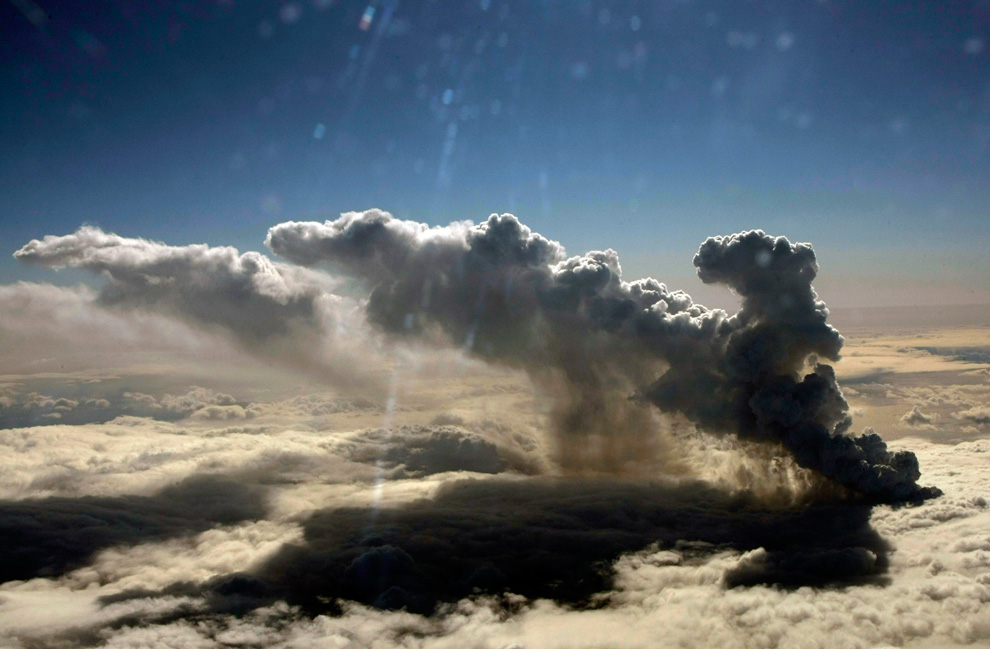
Smoke billows from an erupting volcano which seems to be close to the top of the Eyjafjalla glacier on April 14, 2010 near Reykjavik. All London flights, including those from Heathrow, will be suspended from noon (1100 GMT) today due to volcanic ash from Iceland that has already caused almost 300 cancellations here, officials said. (AFP/Getty Images)

An aerial handout photo from the Icelandic Coast Guard shows flood caused by a volcanic eruption at Eyjafjalla Glacier in southern Iceland April 14, 2010. The volcanic eruption on Wednesday partially melted a glacier, setting off a major flood that threatened to damage roads and bridges and forcing hundreds to evacuate from a thinly populated area. Picture taken April 14, 2010. (REUTERS/Icelandic Coast Guard/Arni Saeberg)
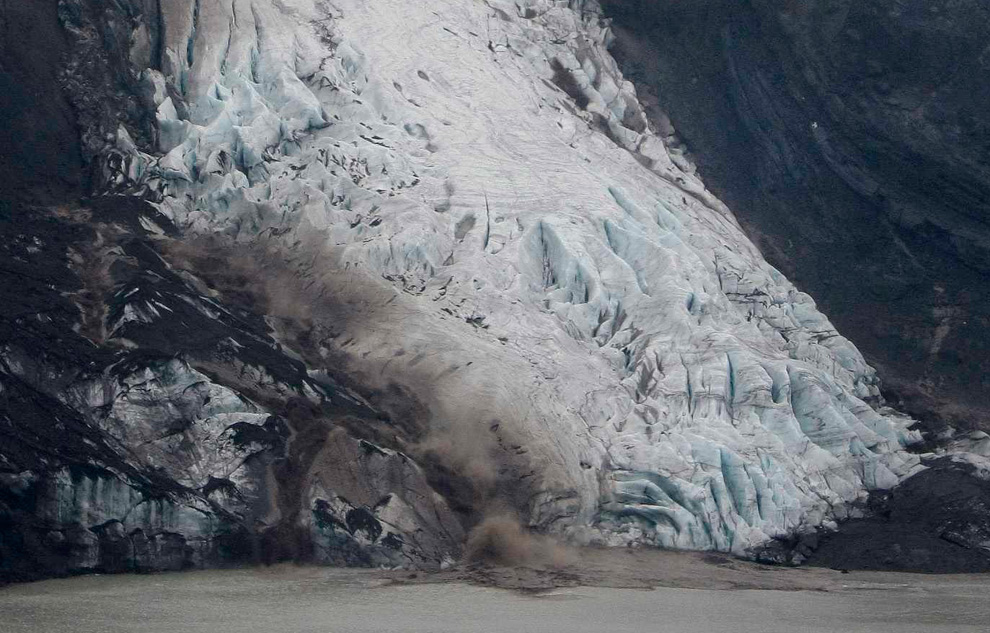
Melting ice caused by a volcanic eruption at Eyjafjalla Glacier in southern Iceland April 14, 2010. (REUTERS/Icelandic Coast Guard/Arni Saeberg)

Photo taken on April 14, 2010 the Markarfljot glacial river, west of the Eyjafjalla glacier. Iceland's second volcano eruption in less than a month melted part of a glacier and caused heavy flooding on April 14, forcing up to 800 people to evacuate and grounding some flights over Norway. (HALLDOR KOLBEINS/AFP/Getty Images)

Flooding caused by a volcanic eruption at Eyjafjalla Glacier in southern Iceland April 14, 2010. (REUTERS/Icelandic Coast Guard/Arni Saeberg) #

A man takes a picture of a road that has been washed away by flood water following the melting of the Eyjafjalla glacier due to the eruption of a volcano on April 14, 2010 near Reykjavik. (HALLDOR KOLBEINS/AFP/Getty Images)
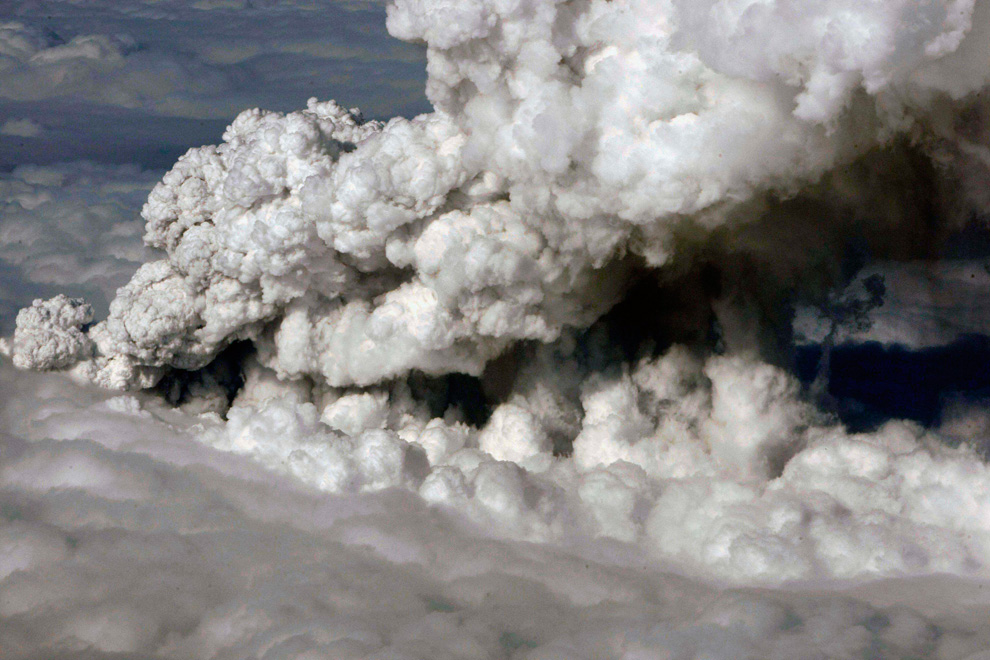
In this Wednesday April 14, 2010 photograph, smoke and steam are seen rising from the volcano under the Eyjafjalla glacier in Iceland, which erupted for the second time in less than a month, melting ice, shooting smoke and steam into the air and forcing hundreds of people to flee rising floodwaters. (AP Photo/Icelandic Coastguard) #
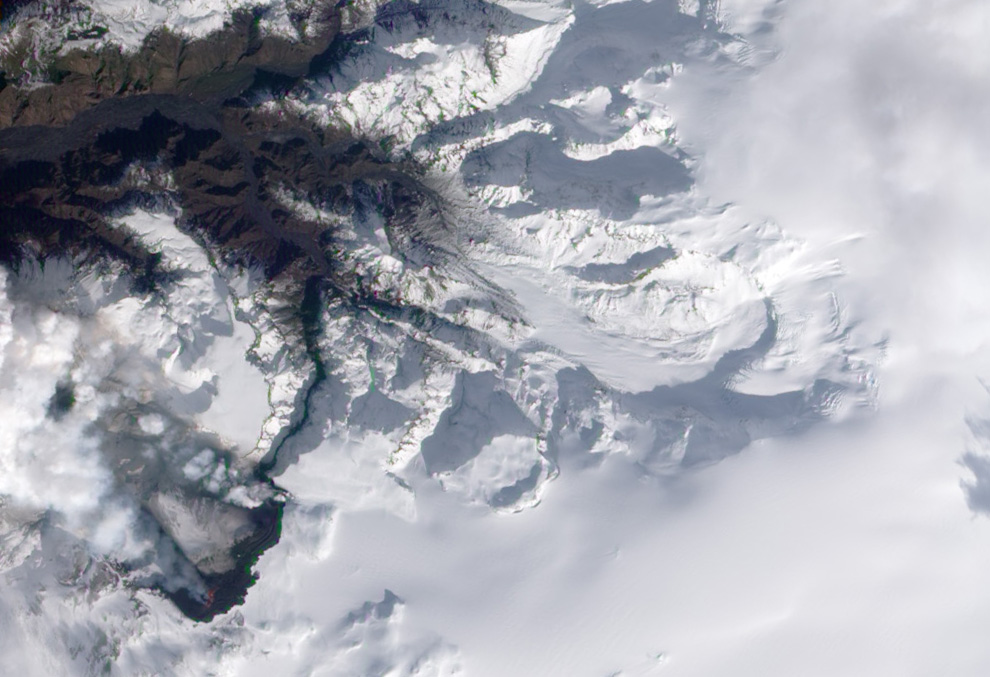
A natural-color satellite image shows lava fountains, lava flows, a volcanic plume, and steam from vaporized snow. The image was acquired on March 24, 2010, by the Advanced Land Imager (ALI) aboard NASA's Earth Observing-1 (EO-1) satellite. The lava fountains are orange-red, barely visible at the 10-meter (33-foot) resolution of the satellite. The scoria cones surrounding the fissure are black, as is the lava flow extending to the northeast. White volcanic gases escape from the vent and erupting lava, while a steam plume rises where the hot lava meets snow. (The bright green color along the edge of the lava flow is an artifact of the sensor.) (NASA's Earth Observatory/Robert Simmon)
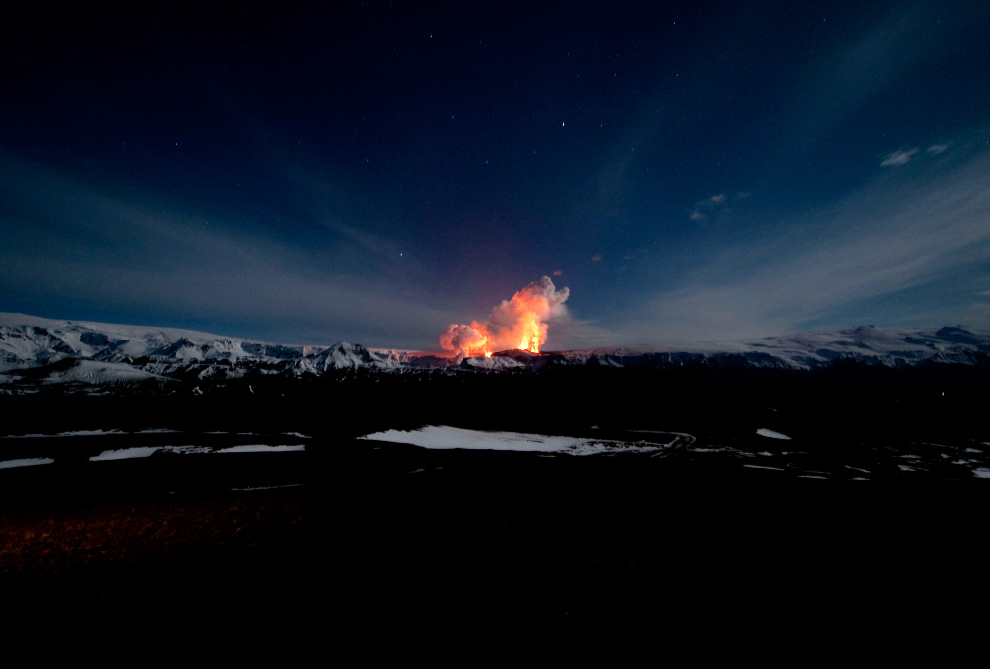
This picture taken on March 27, 2010 shows lava spurting out of the site of a volcanic eruption at the Eyjafjallajökull volcano some 125 km east of Reykjavik. With lava still gushing, a small Icelandic volcano that initially sent hundreds fleeing from their homes is turning into a boon for the island nation's tourism industry, as visitors flock to catch a glimpse of the eruption. (HALLDOR KOLBEINS/AFP/Getty Images)
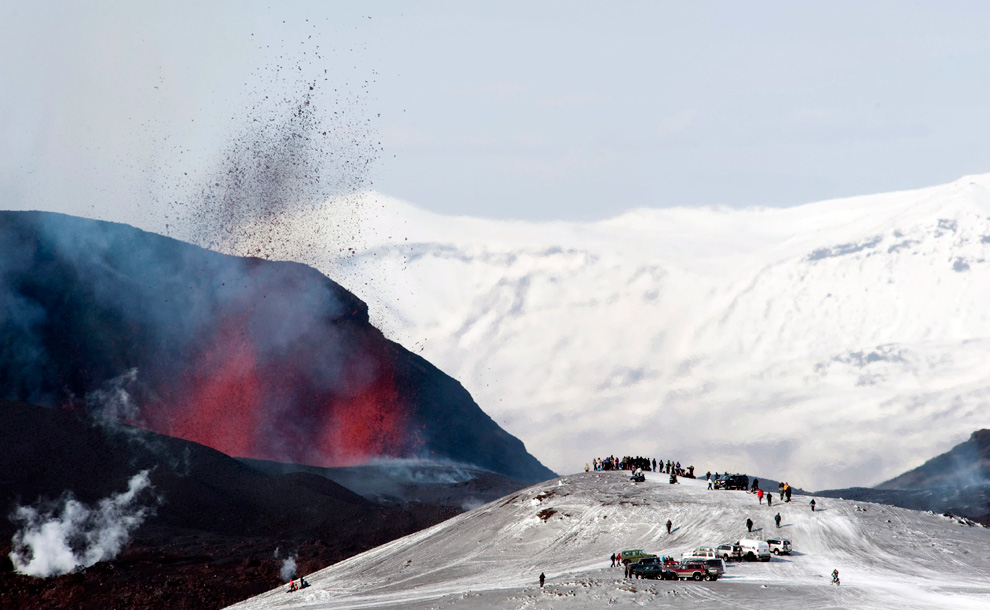
Tourists gather to watch lava spurt out of the site of a volcanic eruption at the Eyjafjallajökull volcano on March 27, 2010. Up to 800 people were evacuated in Iceland early on April 14, 2010 due to a volcano eruption under the Eyjafjallajokull glacier in the south of the island, police and geophysicists said. (HALLDOR KOLBEINS/AFP/Getty Images)
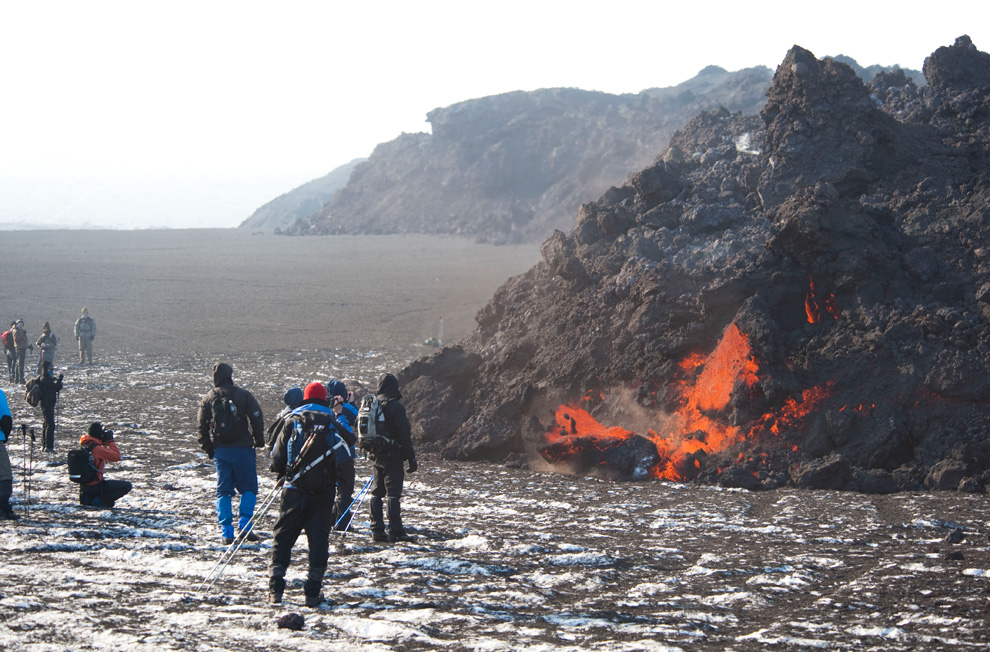
People gather to watch lava flow at the site of a volcanic eruption at the Eyjafjallajökull volcano near the Eyjafjalla glacier on March 27, 2010. (HALLDOR KOLBEINS/AFP/Getty Images) #
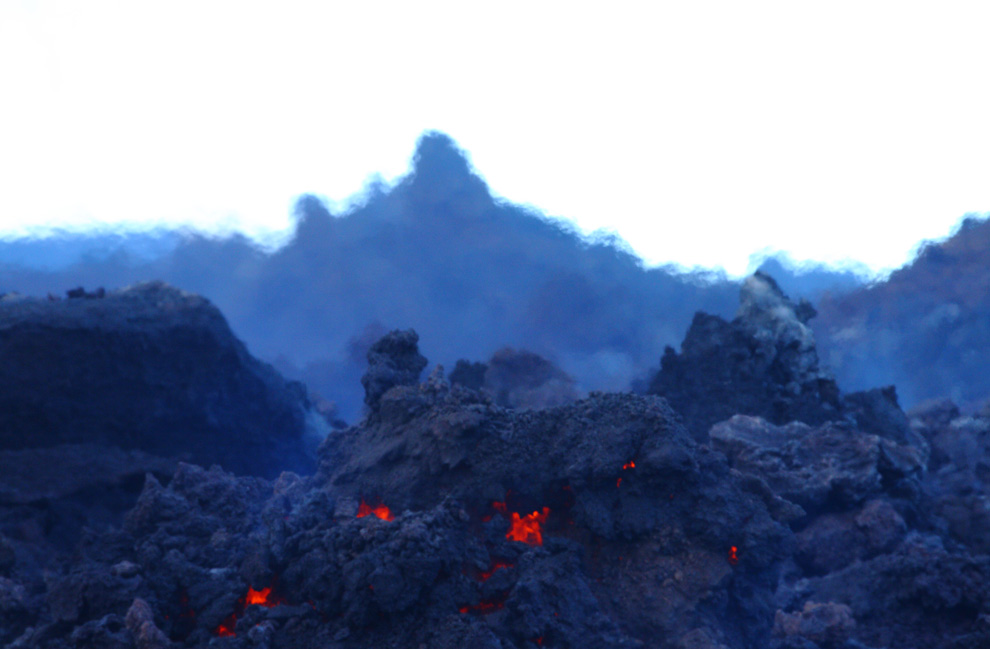
Heat shimmers above lava flowing from the Eyjafjallajökull volcano in Iceland on March 28th, 2010. Original here. (Bruce McAdam / CC BY-SA)
Lava spews out of a mountain on March 21, 2010 in the region of the Eyjafjalla glacier in Iceland. (RAGNAR AXELSSON/AFP/Getty Images)
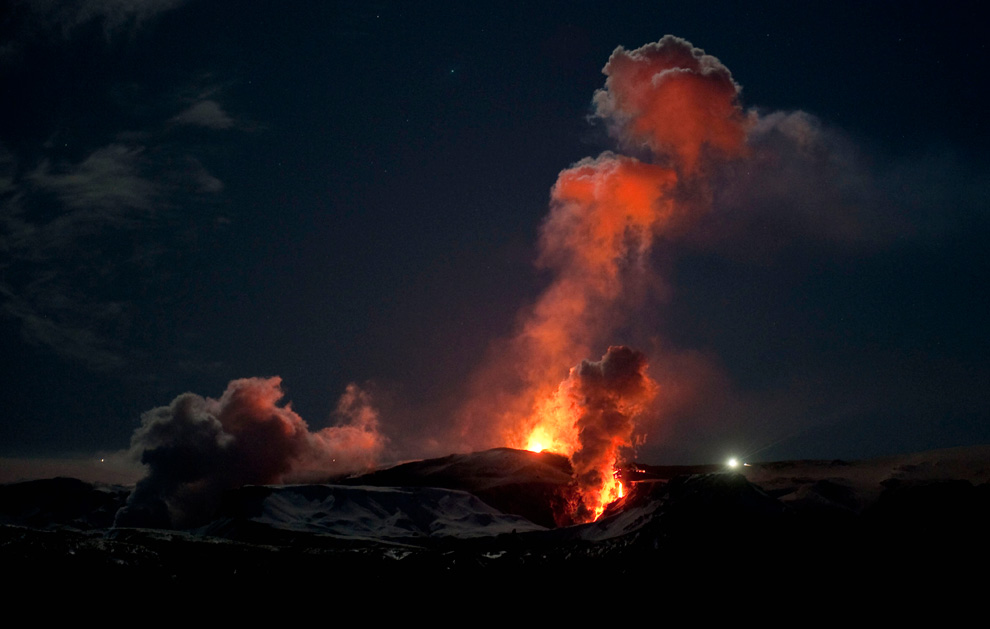
Lava spurts out of the site of a volcanic eruption at the Eyjafjallajökull volcano near the Eyjafjalla glacier in Iceland on March 27, 2010. (HALLDOR KOLBEINS/AFP/Getty Images)

Smoke and steam hang over the volcano under the Eyjafjalla glacier in Iceland, early Thursday April 15, 2010. (AP Photo/Brynjar Gaudi)

Lava spews out of a mountain on March 21, 2010 in Hvolsvöllur in the region of the Eyjafjalla glacier in Iceland. (Fior Kjartansson/AFP/Getty Images)
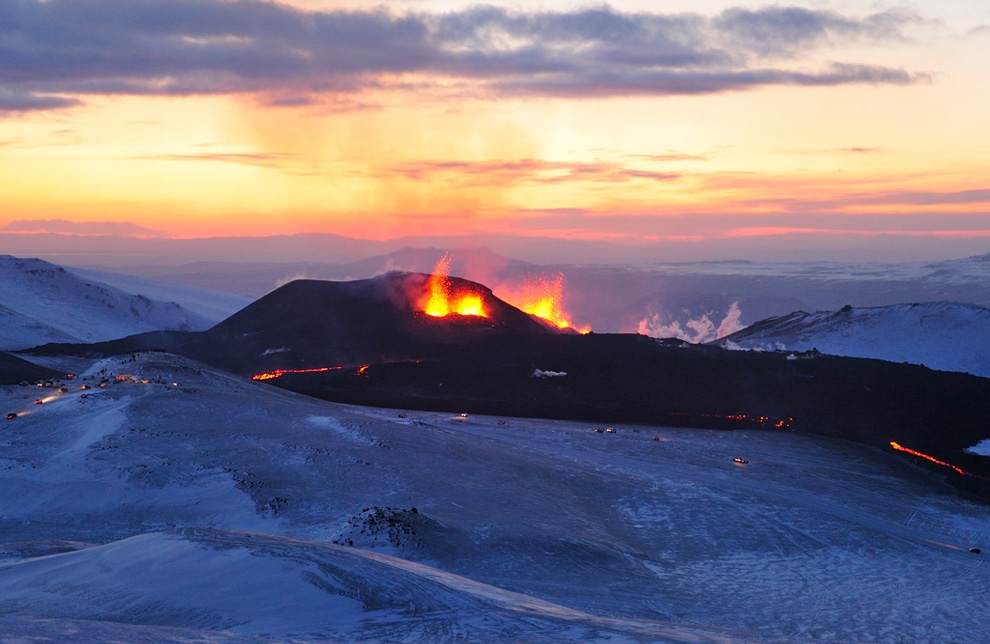
Steam and hot gases rise above lava flowing from the Eyjafjallajökull volcano on April 3rd, 2010. Original here. (Ulrich Latzenhofer)

This image made available by NEODASS/University of Dundee shows the volcanic ash plume from Iceland, top left, to the north of Britain at received by NASA's Terra Satellite at 11.39 GMT Thursday April 15, 2010. (AP Photo/NEODAAS/University of Dundee)
[ via Big Picture @ Boston Herald ]




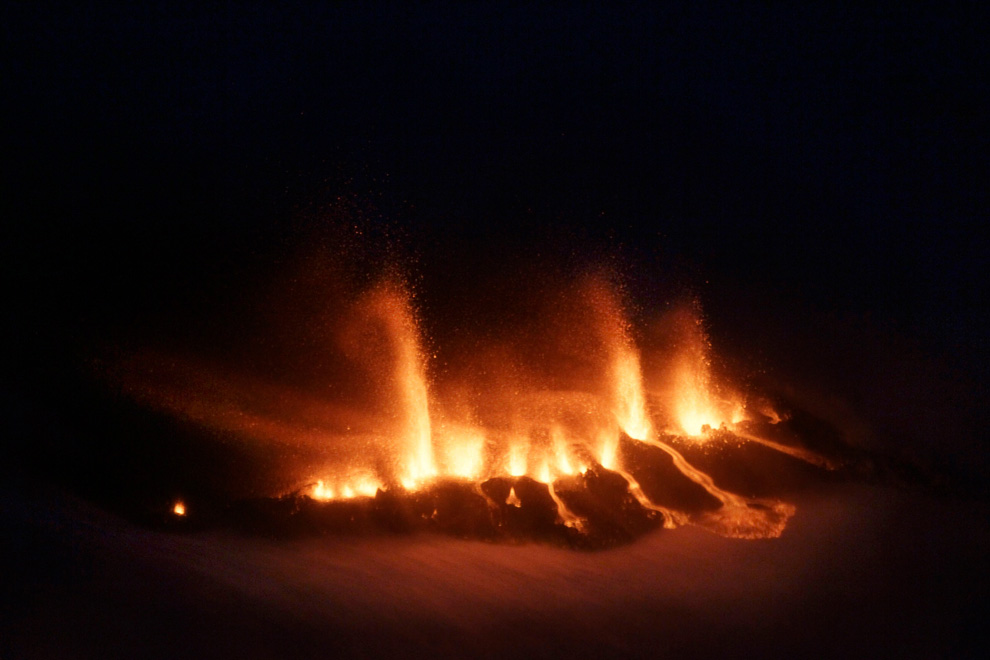



0 comments:
Post a Comment